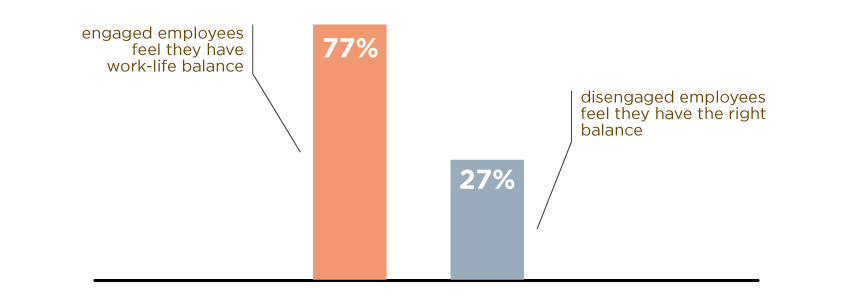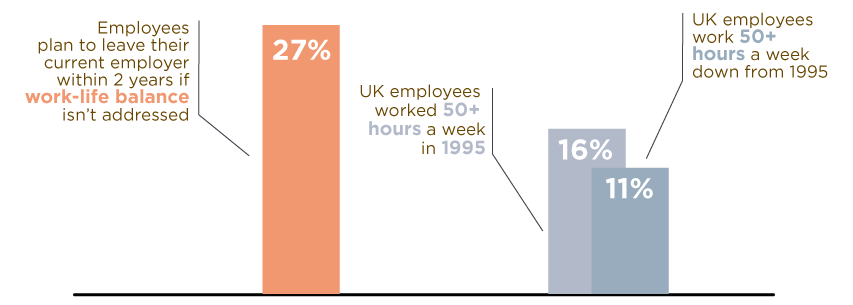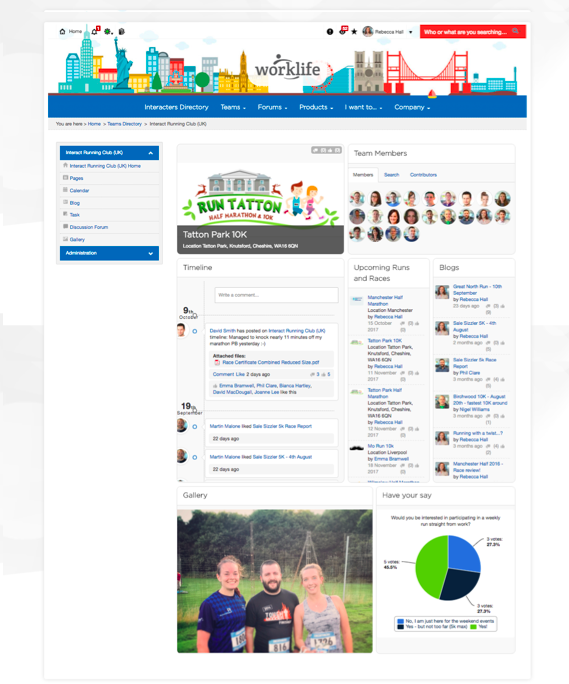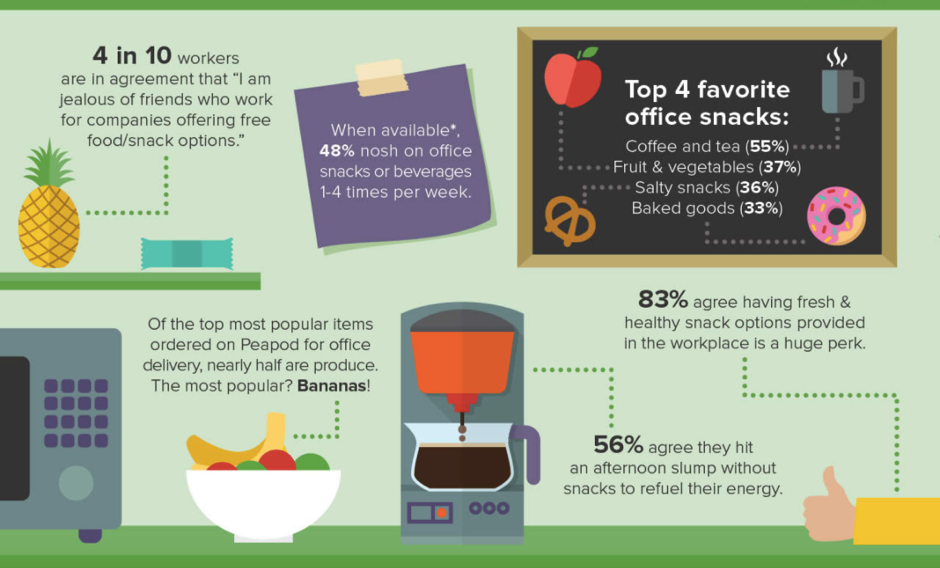World Mental Health Day: 5 steps to support workplace wellbeing
Tuesday 10th October 2017 is the 25th annual World Mental Health day and this year’s theme is workplace wellbeing.
As employers in a world with increased spotlight and awareness on mental health, it has never been more important to have a clear understanding of the impact of not properly supporting employee wellbeing and happiness at work.
The stigma around mental health is gradually subsiding and more people are open to talking about how they feel. However, we still face the statistic that 1 in 4 people will experience a mental health problem each year.
And this isn’t just impacting lives outside of the workplace. In research conducted by leading mental health charity, Mind, 21 per cent of people agreed that they had called in sick to avoid work when asked how workplace stress had affected them and 14 per cent admitted to resigning due to workplace stress.
Being transparent and receptive to methods that will help your employees build and maintain a healthy mind not only positively impacts employee engagement and retention, but also places you one step ahead of organizations that are continuing to bury their heads in the sand.
However, although it is known that a culture of fear and silence around mental health can be costly to employers. It’s difficult to know where to start when mental health is still viewed as a taboo subject. In fact, 30% of people from the same study by Mind disagreed with the statement: ‘I would feel able to talk openly with my line manager if I was feeling stressed’.
Our 5 steps to support workplace wellbeing is aimed to give you something to think about this World Mental Health day, to tackle the stigma within your organization and prove that you are a forward-thinking, approachable business that wants the best for your employees.
1. Recognizing the warning signs
In an increasingly digitalized age, it’s harder than ever to switch off from the office. As a result, many employees are taking stress from work home with them.
Although we know that pressure at work is often required to motivate us, there is a balancing act. When pressure exceeds our normal capacity to cope, stress begins. As a consequence, employees can become anxious and in turn, may not want to flag concerns to their manager out of worry that it reflects badly on their skills and capabilities. As a result, the situation enters a spiral, becoming worse over time.
As employers, it is beneficial to understand the warning signs of stress in the workplace to avert any longstanding problems that can lead to breakdown in employee/employer relationships, lack of trust and overall poor health for the employee.
Spot the warning signs early and have a chat with your employees if they:
- Have a lack of concentration and reduced productivity
- Are increasingly moody or sensitive to what their peers say
- Have a breakdown in work relationships
- Are absent more frequently than usual
- Seem negative, trapped and frustrated for prolonged periods of time
Though these signs are not solid indicators of stress as a result of workload, it is constructive for anyone of concern to be approached in a relaxed and informal manner to see if they are OK, and address how you can help to reduce any stress.
2. Encourage work-life balance
Separating work from home life requires a conscious effort. It’s also an effort some employees may struggle to put in, particularly if stress has developed into feelings of anxiety.
Although you cannot eliminate stress from every aspect of a person’s life, you can start with workload and work-life balance, whilst also promoting a flexible culture.
Happy employees are 12 per cent more productive than their unhappy counterparts. A full-time employee spends more time at work than they do at home, understandably meaning that the majority of stress could potentially come from the workplace.
Here are some quick wins to consider that will help promote a positive culture:
- Encourage employees to use all of their holiday hours
- Place emphasis on quality of work, rather than quantity of hours worked
- Introduce flexible working where appropriate
- Recognize good work, no matter how big or small the effort
Although full-time employment can be seen to be repetitive and ‘a bit of a rut’, it is actually well-known that a solid daily routine can be beneficial for strong mental health.
Helping employees provide structure to their day by encouraging them to switch off when they finish work is important to maintain that balance, and allows employees to leave the office and factor something else, such as exercise or a hobby, into their routine.


While working from home and adding extra hours is occasionally necessary and sometimes makes employees feel empowered and positive about their achievements, it is still essential to keep an eye out that employees are still practicing a healthy work-life balance. If we’re not careful, employees may end up burning themselves out – which is bad news for both individual and employee.
3. Create an open place to talk
Do your employees know where to go and who to talk to if they are feeling stressed, anxious or depressed, even if it is not work related?
Do you know what resources are available to your staff and have you communicated this well?
Showing that you are an open organization that empathises with the growing concerns around mental health both in and out of the workplace has a big part to play in encouraging people to talk about how they feel.
Whether you have a HR department trained in how to manage mental health within the workplace or you have mental health advocates across different departments, it is crucial that your employees know what path to go down, should they need help.
It is also important to give employees a clear understanding of what other resources are available to them.
Popular health plans favoured by businesses, such as Health Shield and Vitality, not only offer traditional benefits such as dental cover or physiotherapy that are appealing to employees, but can also provide money back on private counselling sessions, where an appointment can be scheduled within days. They also tend to offer free advice and important helplines.
Getting to grips with and sharing this information isn’t only important on day one of a person’s employment – it needs to be referenced regularly, just like you would with key company news and updates:
- Make any useful information easily accessible and searchable on your company intranet
- Ensure that workplace wellbeing is discussed as part of the employee induction process
- Embrace days such as World Mental Health day to promote your values and culture and help lift the stigma
- Train your managers on how to handle mental health concerns, whether approached by a member of staff or by observation
- Offer resources on ways to improve self-care, such as developing healthy intrapersonal communications
Each of these aspects can help shape a more open culture, where mental health is regarded in the same way as any physical health concern – and can be talked about, addressed, and supported the right way.
4. Allow employees to help each other
There is growing recognition of the importance of individual health and wellbeing, both inside and outside of the workplace. As an employer, it is important to be receptive to methods that help your employees build and maintain a healthy mind.
People like helping people. Creating collaborative team spaces where employees can openly share hints, tips and advice – just like they do on Facebook – is a quick win to get the wellbeing ball rolling.
Recommendations from peers remains the most credible form of advice. In the advertising world, 92% of consumers trust referrals from people they know. We can take this statistic to further understand that humans lead by example. If you have employees openly discussing different ways to improve health and fitness, then others are likely to try them out.
This won’t work for everyone – but by having an open place for employees to share advice, you provide a valuable avenue for those people who are willing to embrace self-care through the advice of others in similar situations.
Whether your employees want to set up a running or exercise club, share ‘good mood food’ recipes or simply chat about what activities are going on in the local area, there should be a place accessible for them to collaborate and support each other.

(At Interact, we use our intranet ‘WorkLife’ to host the company Running Club team area. Here employees can promote upcoming races, organize casual runs, blog about races they’ve done, host photos and more. It’s a useful tool to bring together employees with a shared mutual interest that can benefit physical – and by extension, mental – wellbeing.)
But the role of promoting fitness and health for better wellbeing doesn’t stop in the arms of your employees. Here’s what you can do as an employer:
- Opt for healthier snacks. Everyone loves a tuck box trip for a calorific mid-afternoon pick me up, but have you thought of also offering free fruit? A September 2015 study by Peapod highlighted that 66% of employees whose offices provide free, healthy snacks or beverages report being extremely or very happy with their current job.

(Source: Peapod)
- Free flu jab. When the nights draw in and the days get colder, one in 15 of us suffers from SAD (seasonal affective disorder). And what can make SAD worse just at that very same time of year? Getting the flu. Companies can help combat the inevitable drain on both physical and mental health that a bout of flu creates by offering corporate flu jab packages. From pre-paid vouchers to an on-site nurse, protect your employees and also reap the benefits of reduced sickness absence.
- Social activities. While drinking in moderation is fine, long term consumption of alcohol is linked to poor mental health. Not all work social trips have to involve alcohol. Why not think of some unique ideas to keep employees active and cater for those that don’t want to just go on a night out? An organised hike, skating at the local rink or bowling all focus around a specific activity, rather than eating and drinking alone. GoApe or indoor trampoline parks are also popular favourites.
5. Train managers and build a culture of trust
Making sure managers throughout the business are approachable and empathetic when it comes to dealing with mental health problems is critical to creating an open culture of trust for your employees.
Though you yourself may understand the importance of supporting employee wellbeing, other direct line managers may not have had any training on how to deal with any instances from their staff.
There are a number of ways to ensure managers know the necessary methods to cope with mental health awareness and coping strategies:
- Train managers internally on what resources are available to staff. As mentioned previously, if you have any health plans on offer, ensure that all managers know what is accessible to staff and clear instructions on where to go and who to ask for help.
- Have an escalation process. If your managers are not comfortable discussing mental health with employees and do not know what to say, have a clear escalation process in place so that staff are pointed in the right direction – for example to specially trained personnel in HR
- Provide external resources. Charities like Mind have free, downloadable training content and resources on how to deal with mental health in the workplace. Visit www.mind.org.uk/workplace/training-consultancy/ for training courses and free resources.
You may also wish to conduct regular staff surveys, that are completely anonymous, to give employees the chance to show how they feel about approaching their line managers or the business when it comes to their mental health. This not only gives you a chance to improve, but also shows employees that you are listening and encouraging better mental health.
Employee wellbeing isn’t just a nice idea anymore. Employers have a duty of care to their employees to ensure the safety and well-being of all staff members, and this shouldn’t stop at mental health. Employers must now work to break the mental health taboo, to create workplaces that talk about mental health, just like they do physical illness.
If you need any further advice on improving mental health in the workplace then visit: www.mentalhealth.org.uk/campaigns/world-mental-health-day
